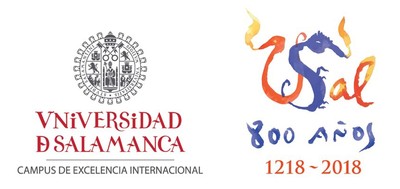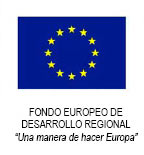Materials processing and ultrashort pulse technology: Laser Laboratory Facility
The Laser Laboratory is located at the basement of the Trilingüe Building, in the Science Faculty at the University of Salamanca. It is established as a support service for research in two ways:
- Support for researchers. We offer the equipment of our lab to research groups in order to perform experiments with our support.
- Service for companies and other institutions for the realization of specialized tasks.
The Laser Laboratory is managed by the researchers of the Laser Applications and Photonics Group (ALF, https://laser.usal.es/alf/en/home/). This facility promotes the University of Salamanca to a very singular position concerning ultrafast materials processing, generation and characterization of ultrashort pulses, and fabrication of integrated photonic devices. The success of the joint research and collaboration in these technological topics resulted in several patents, continuous research transfer and collaboration with national and international companies and institutions.

Services:
The services we offer at the Laser Laboratory are summarized in the following topics:
- Materials micro and nanostructuring with femtosecond laser pulses
- Photonic devices fabrication: photonic circuits, optical waveguides, integrated lasers. Lab-on-a-chip devices and optical biosensors.
- Sub-cellular surgery and biological tissue micro-cutting.
- Laser induced breakdown spectroscopy (LIBS) with femtosecond pulses: elemental analysis and depth profiling. Selective etching of coatings.
- Full characterization of laser sources: spectral and spatio-temporal characterization.
- Characterization of laser pulses with temporal polarization dependence
Equipment:
- Laser systems
Two ultrashort pulsed laser sources (Spitfire, Spectra Physics) based on Ti:Sapphire CPA technology.
- System 1: it delivers pulses with 120 fs temporal duration and 795 nm central wavelength. The system has two amplification stages, a regen and a multipass, that can be used simultaneously. The output of the regen consists of a 1 KHz pulse train with 1 mJ pulse energy. The output of the multipass is a 10 Hz pulse train with up to 50 mJ pulse energy.
- System 2: this system recently incorporated to the lab delivers 60 fs pulses at a central wavelength of 795 nm, with a 5 kHz repetition rate and maximum pulse energy of 1.6 mJ. This beam can be used directly or can be used for seeding an OPA that allows tuning the central wavelength of the pulsed beam in the region 240-2600 nm.
- Microprocessing setups
- Two processing stages
- Characterization and optical manipulation equipment: nonlinear crystal, attenuators, shutters, power-meters, beam profilers.
- Micro-positioning stages (up to 5 axes computer controlled)
- LIBS spectrograph (Andor Shamrock 303i) with imaging detection mode and intensified CCD Andor iStar 734.
- Extraction system
- Software for automatization and control.
- Focalization optics
- Optical microscope (Zeiss AxioImager Z1m)
- Setup for characterization of photonic devices (visible and infrared seeded)
- Pulse control and characterization
- Post-compression setup (120 fs to 12 fs)
- Home-made SPIDER
- Home-made D-scan
- Spatio-temporal characterization setup (STARFISH)
- Temporal polarization dependence measurement setup
- CCD and beam profilers
- Spectrometers and power meters
Contact:
Photonic devices microfabrication: Javier Rodríguez (jrval@usal.es)
Materials micro and nano-structuring: Pablo Moreno (pmoreno@usal.es)
Pulse characterization and control: Íñigo Sola (ijsola@usal.es)
Area of Instrumental Techniques
Area of Biological Resources
Area of Biomolecular Characterization, Imaging and Bioinformatics
Associated Units
- Legal notices
- © Copyright 2024



